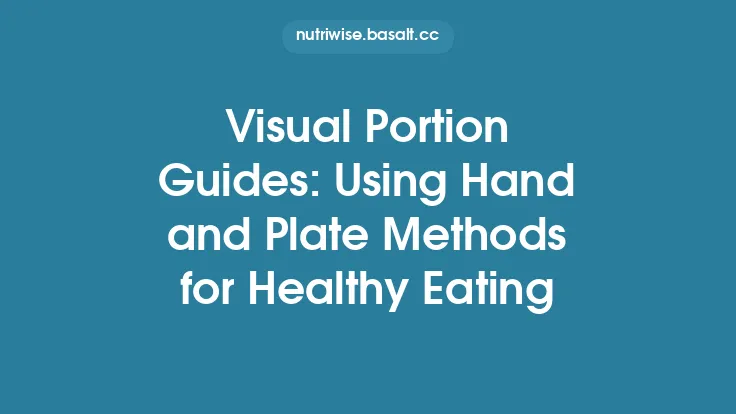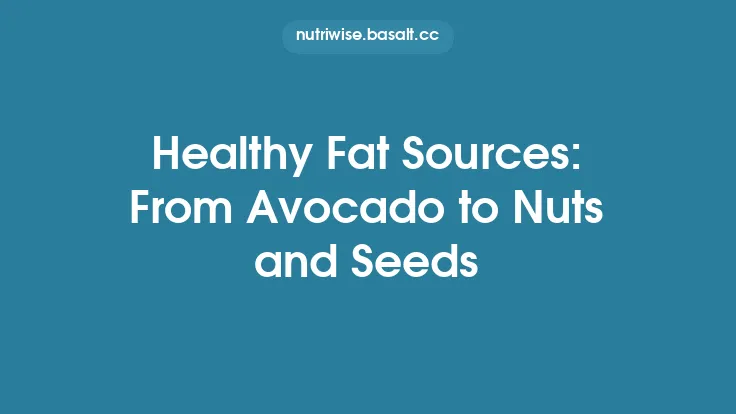Roasting is one of the most versatile cooking methods, delivering deep caramelization, tender interiors, and a satisfying mouthfeel without the need for heavy pans or constant attention. Yet, many home cooks reach for a generous drizzle of oil to keep vegetables, proteins, or whole‑grain dishes from drying out. While a modest amount of oil can enhance flavor and aid heat transfer, it also adds calories and saturated fats that many people are trying to limit. Fortunately, by employing strategic spritzes and well‑crafted marinades, you can achieve the same luscious results with a fraction of the oil—sometimes none at all. This approach not only supports a low‑fat dietary pattern but also preserves nutrients, reduces waste, and encourages creative flavor development.
Understanding the Role of Fat in Roasting
Heat Transfer and Maillard Reaction
Fat is an excellent conductor of heat, helping the surface of food reach the temperatures needed for the Maillard reaction—the chemical browning that creates complex, savory flavors. However, the same reaction can be triggered by dry heat alone if the food’s surface is adequately moistened and the oven is pre‑heated to a high temperature (typically 200 °C / 400 °F or above).
Moisture Retention
A thin coating of oil can create a barrier that slows moisture loss, but this barrier can also be formed by a light mist of water, broth, or acidic liquids (vinegar, citrus juice). These liquids evaporate during roasting, leaving behind a glossy surface that encourages browning without the added fat.
Flavor Carrier
Fat dissolves and carries fat‑soluble flavor compounds (e.g., terpenes from herbs, carotenoids from vegetables). By pairing these compounds with emulsifiers such as mustard, yogurt, or a small amount of oil, you can still deliver robust flavor while keeping the overall fat content low.
The Science Behind Spritzes
What Is a Spritz?
A spritz is a fine mist of liquid applied to food just before or during roasting. It can be delivered with a spray bottle, a squeeze bottle with a fine nozzle, or even a pastry brush for a slightly thicker coating.
Key Benefits
- Uniform Moisture Distribution – A mist spreads evenly, preventing dry spots that could burn.
- Controlled Calorie Addition – Because the droplets are tiny, the total volume of liquid (and thus calories) is minimal.
- Enhanced Browning – The water in the spritz evaporates, concentrating sugars on the surface and promoting caramelization.
Choosing the Right Liquid
- Plain Water – Purely for moisture; best for vegetables that already have natural sugars.
- Acidic Solutions – Lemon juice, apple cider vinegar, or a splash of wine can brighten flavors and help break down cell walls, allowing deeper penetration of seasonings.
- Low‑Fat Dairy or Plant‑Based Milks – Provide a subtle creaminess and aid in browning due to lactose or natural sugars.
- Broth or Stock – Adds umami without fat; ideal for proteins and root vegetables.
Application Timing
- Pre‑Roast Spritz: Apply once after seasoning and before the oven’s heat hits the food. This creates a thin film that will lock in seasonings.
- Mid‑Roast Spritz: Re‑spritz halfway through cooking (usually after 15–20 minutes for most vegetables) to replenish moisture and maintain a glossy surface.
- Final Spritz: A quick mist in the last 5 minutes can give a fresh burst of flavor, especially when using citrus or herb‑infused liquids.
Crafting Low‑Fat Marinades for Roasting
Marinade Fundamentals
A classic marinade consists of three components: acid, flavor agents (herbs, spices, aromatics), and a binder/emulsifier. In low‑fat roasting, the binder can be a small amount of oil (1–2 teaspoons per quart of liquid) or a non‑fat alternative such as mustard, yogurt, or a puree of silken tofu.
Balancing Acidity and Flavor
- Acidic Base: Lemon juice, lime juice, balsamic vinegar, or a light wine reduction.
- Flavor Enhancers: Fresh herbs (rosemary, thyme, cilantro), dried spices (smoked paprika, cumin), garlic, ginger, and a pinch of salt.
- Binder Options:
- Mustard – Natural emulsifier; adds tang and helps coat the food.
- Greek Yogurt (non‑fat) – Provides creaminess and a slight protein boost.
- Pureed Vegetables – Roasted red pepper or pumpkin puree can add body and subtle sweetness.
Marinade Ratios (for 1 kg of food)
| Ingredient | Quantity |
|---|---|
| Acid (e.g., lemon juice) | 60 ml |
| Low‑fat binder (mustard or yogurt) | 30 ml |
| Olive oil (optional, for flavor) | 10–15 ml |
| Fresh herbs, minced | 2 tbsp |
| Garlic, crushed | 2 cloves |
| Salt & pepper | to taste |
| Water or broth (to thin if needed) | up to 30 ml |
Marinating Time Guidelines
- Leafy greens & delicate vegetables (zucchini, bell peppers): 15–30 minutes.
- Root vegetables (carrots, beets, sweet potatoes): 30–60 minutes.
- Proteins (chicken breast, tofu, firm fish): 1–2 hours, up to overnight for deeper penetration.
Safety Note
Always marinate in the refrigerator. Discard any leftover marinade that has contacted raw protein unless you bring it to a rolling boil for at least 3 minutes before using as a sauce.
Practical Techniques for Different Food Groups
1. Vegetables
- Root Vegetables: Toss cubed carrots, parsnips, and potatoes in a mixture of broth, a splash of apple cider vinegar, and a teaspoon of mustard. Roast at 220 °C (425 °F) for 30–40 minutes, spritzing with broth halfway through.
- Cruciferous Veggies: Coat cauliflower florets with a lemon‑herb spritz (lemon juice, thyme, a pinch of sea salt). Roast on a parchment sheet to prevent sticking.
- Squash & Summer Veggies: Use a light yogurt‑herb glaze (non‑fat Greek yogurt, dill, lemon zest). The yogurt will brown nicely, creating a creamy crust without added oil.
2. Poultry
- Chicken Breasts: Marinate in a blend of low‑fat buttermilk, smoked paprika, and a teaspoon of olive oil. After 1 hour, pat dry, then spritz with a mixture of chicken broth and a dash of lemon juice before roasting.
- Turkey Cutlets: Use a citrus‑herb spritz (orange juice, rosemary, garlic). The natural sugars in orange juice promote caramelization.
3. Seafood
- White Fish Fillets: A quick spritz of white wine and a smear of mustard before roasting at 200 °C (400 °F) yields a moist, flaky result.
- Shellfish (shrimp, scallops): Marinate briefly (10–15 minutes) in a lime‑garlic mixture with a pinch of chili flakes; the acid “cooks” the surface, reducing the need for oil.
4. Plant‑Based Proteins
- Tofu: Press to remove excess water, then marinate in soy sauce, rice vinegar, a dash of sesame oil (optional), and a teaspoon of maple syrup. After 30 minutes, bake on a silicone mat, spritzing with a little water halfway through to keep the surface from drying out.
- Tempeh: Slice thinly, marinate in a mixture of miso paste, tamari, and a splash of orange juice. The miso acts as an emulsifier, creating a glossy coating without oil.
Equipment Choices That Complement Spritz‑Based Roasting
- Silicone Baking Mats – Provide a non‑stick surface without the need for oil. They also allow for even heat distribution.
- Cast‑Iron or Stainless Steel Roasting Pans – Conduct heat efficiently; a light spray of water or broth prevents sticking.
- Wire Racks – Elevate food, allowing hot air to circulate and excess moisture to drip away, which is especially useful for proteins.
- Fine‑Mist Spray Bottles – Opt for glass or BPA‑free plastic bottles with adjustable nozzles to control droplet size.
Troubleshooting Common Issues
| Problem | Likely Cause | Solution |
|---|---|---|
| Food sticks to the pan | Insufficient moisture or too high a temperature early on | Apply a light spritz of broth before the first 10 minutes of roasting; lower oven temperature by 10–15 °C if sticking persists. |
| No browning, looks pale | Too much water evaporating too quickly, or low oven temperature | Increase oven temperature to at least 200 °C (400 °F) and finish with a final spritz of a sugar‑containing liquid (e.g., a thin honey‑water mix). |
| Dry, tough texture (especially proteins) | Over‑cooking or insufficient internal moisture | Use a meat thermometer to stop cooking at the target internal temperature; add a mid‑roast spritz of broth or a thin layer of low‑fat yogurt. |
| Uneven flavor distribution | Inadequate marinating time or uneven coating | Toss food in the marinade in a zip‑top bag to ensure full coverage; let it rest for the recommended time before roasting. |
Health Benefits of Reducing Oil in Roasting
- Lower Caloric Density – Cutting oil from 2 tbsp (≈240 kcal) to a spritz (≈10 kcal) can reduce a dish’s total calories by up to 15 %.
- Reduced Saturated Fat Intake – Minimizing oil helps keep saturated fat below the recommended 10 % of total daily calories, supporting cardiovascular health.
- Preserved Nutrients – Excess oil can leach fat‑soluble vitamins (A, D, E, K) from vegetables; a spritz retains more of the natural nutrient profile.
- Improved Digestibility – Lighter meals are easier on the digestive system, especially for individuals with gallbladder issues or pancreatitis.
Sample Meal Plans Featuring Spritz‑Based Roasting
Meal 1 – Mediterranean‑Style Roasted Veggie Bowl
- Roasted Veggies: Eggplant, zucchini, and cherry tomatoes spritzed with olive‑herb broth.
- Protein: Lemon‑marinated grilled chicken breast (spritzed with lemon‑thyme mist).
- Grain: Quinoa tossed with a drizzle of lemon juice and chopped parsley.
- Finish: Sprinkle of feta (optional) and a final mist of balsamic reduction.
Meal 2 – Autumn Roasted Root Medley with Tofu
- Root Veggies: Carrots, parsnips, and sweet potatoes marinated in a maple‑mustard glaze, spritzed with apple cider during roasting.
- Protein: Pressed tofu cubes marinated in soy‑ginger sauce, roasted on a wire rack.
- Side: Steamed kale tossed with a splash of lemon‑water spritz.
Meal 3 – Light Citrus‑Roasted Fish
- Fish: White fish fillets brushed with a citrus‑mustard spritz, roasted on parchment.
- Accompaniment: Roasted asparagus lightly misted with white wine and garlic.
- Carb: Wild rice pilaf with a drizzle of low‑fat yogurt and fresh dill.
Tips for Making Spritz‑Based Roasting a Habit
- Prep Spritz Bottles Ahead – Fill several small bottles with different liquids (broth, citrus, herb‑infused water) and store them in the fridge for quick access.
- Batch Marinade – Create a large batch of a versatile low‑fat marinade (e.g., lemon‑herb‑mustard) and keep it refrigerated for up to a week.
- Use a Timer – Set a reminder to spritz halfway through cooking; this ensures consistency and prevents forgetting the step.
- Experiment with Flavors – Swap out herbs, acids, and binders to keep the palate excited—think orange‑coriander, ginger‑lime, or rosemary‑pomegranate.
By integrating thoughtful spritzes and intelligently crafted marinades, you can transform traditional roasting into a low‑fat, oil‑smart technique that delivers bold flavor, appealing texture, and nutritional benefits. The approach is adaptable to vegetables, proteins, and plant‑based alternatives alike, making it a cornerstone strategy for anyone seeking healthier, yet still delicious, home‑cooked meals.





